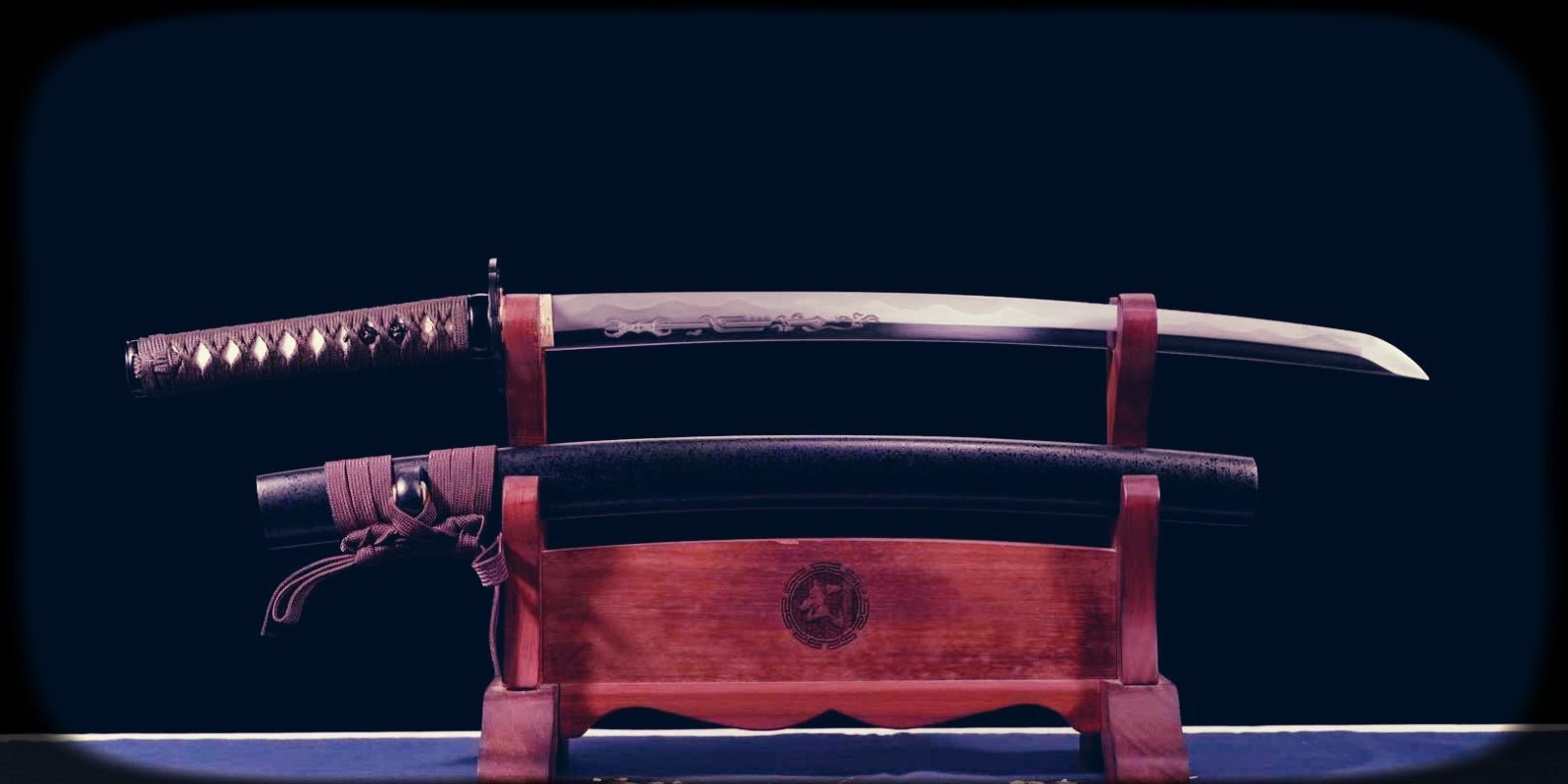Introduction: The Wakizashi as a Symbol of Samurai Culture
The wakizashi, a traditional Japanese short sword, holds profound symbolic significance within samurai culture. Paired with the katana to form the iconic daisho, the wakizashi was not merely a weapon but a representation of honor and identity. It served as a companion blade, often retained indoors when the katana was left outside. This weapon emphasized a samurai's readiness, representing vigilance and discipline in their daily lives. Beyond combat, it played an important role in rituals, including the deeply personal act of seppuku (ritual suicide). Its symbolism permeated Japanese traditions, reflecting social values and the bushido code.
The Origins and Historical Development of the Wakizashi
The wakizashi originated during Japan's feudal era, emerging as an essential companion to the katana. It was forged during the early Muromachi period (1336–1573), paralleling advancements in samurai weaponry and societal needs. Early wakizashi blades were designed with versatility, serving defensive and ceremonial purposes.
By the Azuchi-Momoyama period (1568–1600), its role expanded beyond combat aesthetics, embodying the warrior’s honor. Samurai carried it while off-duty, ensuring readiness, as its shorter blade allowed for swift indoor combat. Over succeeding centuries, its design reflected evolving forging techniques and the cultural significance of dual-wielded daisho, symbolizing the samurai code.
Design and Craftsmanship: What Makes a Wakizashi Unique
The wakizashi stands out due to its balanced blend of intricate design and expert craftsmanship, reflecting the artistry of Japanese swordsmiths. Typically, its blade measures between 12 to 24 inches, carefully forged with tamahagane steel using traditional techniques to ensure durability and sharpness. The curvature of the blade, known as "sori," enhances precision and slicing ability, making it functional in combat situations.
The hilt, or "tsuka," is wrapped in ray skin ("samegawa") and silk cord for optimal grip and aesthetics. Elaborate fittings, including the guard ("tsuba") and pommel ("kashira"), often feature motifs inspired by nature or samurai lore, emphasizing individuality.
The Role of the Wakizashi in the Samurai's Dueling Practices
The wakizashi held a significant role in the intricate traditions of samurai dueling practices. Renowned as the “companion sword” to the katana, it often served as an auxiliary weapon in tense, close-quarter combat. Unlike the katana, the shorter length of the wakizashi allowed samurai greater maneuverability when fighting in confined spaces or during unexpected encounters.
Samurai adhered to strict codes of conduct, hence the wakizashi became essential in formalized one-on-one duels. It provided precision and control in combative situations requiring swift and deliberate strikes. Additionally, the blade’s lightweight structure enabled faster draw and response time, offering a tactical edge during unpredictable confrontations.
A Companion to the Katana: The Daishō Pair Explained
The daishō, translating to “big-little,” refers to the distinctive pairing of the katana and wakizashi carried by samurai. This pair symbolized the warrior’s social status and dual nature—prepared for both battle and personal defense. While the katana served as the primary weapon for combat, the wakizashi complemented it, fulfilling roles unsuitable for the longer blade.
Key purposes of the daishō include:
- Combat Versatility: The wakizashi was ideal for close-quarters fighting where the katana’s length proved cumbersome.
- Ceremonial Importance: It represented honor and the samurai’s adherence to Bushidō principles.
- Practical Use: Beyond combat, the wakizashi assisted with daily tasks like cutting through dense materials.
Their harmonious pairing underscored the samurai’s balance between might and precision.
The Wakizashi in Rituals and Ceremonial Traditions
The wakizashi held profound symbolic significance in numerous rituals and ceremonies within samurai culture. Its use in seppuku (ritual suicide) is one of the most solemn examples. During this act, the wakizashi was the designated blade, signifying honor, duty, and atonement in the face of failure or disgrace.
In the ceremonial context of presenting swords, the wakizashi often accompanied the katana in a paired set known as the daishō, symbolizing the samurai's authority and social status. The ritual of gifting such sets was both a gesture of respect and a recognition of rank.
The blade was also passed down through generations, deeply embedding it within family traditions and lineage.
Practical Everyday Uses of the Wakizashi for Samurai
The wakizashi served multiple practical purposes in the daily lives of samurai, extending its value beyond the battlefield. While the katana was typically reserved for combat, the wakizashi acted as a versatile implement in more confined spaces. Samurai relied on this shorter blade for tasks requiring precision, such as cutting materials or fulfilling ceremonial obligations.
Additionally, the wakizashi provided a critical means of self-defense when samurai were indoors, as the katana’s length could be unwieldy in tight quarters. It also became a symbol of responsibility when used in rituals like seppuku. The wakizashi embodied utility, accessibility, and tradition harmoniously.
The Wakizashi's Role in Seppuku: Honor and Responsibility
The wakizashi, a shorter companion to the katana, held profound significance in the ritual act of seppuku, a samurai’s ceremonial suicide performed to preserve honor or accept responsibility for failure. This blade was meticulously chosen for its manageable size and ease of handling, ensuring precision during the act.
Seppuku, a ritual steeped in tradition, required exacting preparation. The wakizashi served as the instrument of the samurai's final gesture of integrity. A second, known as “kaishakunin,” was often present to deliver a swift blow with a katana to minimize suffering, emphasizing mutual respect and trust. Thus, the wakizashi symbolized both solemn duty and unwavering resolve.
Cultural Representation of the Wakizashi in Japanese Art and Literature
The wakizashi occupies a symbolic space in Japanese cultural and artistic narratives, frequently portrayed as a vessel of loyalty and honor. In traditional woodblock prints, samurai are often depicted with the wakizashi accompanying the katana, emphasizing its integral role in their identity. Japanese literature, such as Edo-period tales, highlights the wakizashi in dramatic storylines, particularly in acts of seppuku, underscoring its gravity in ritual and duty.
Additionally, the wakizashi is often referenced in haiku and poetry as a metaphor for duality, precision, and discipline. Such representations reveal its enduring influence on Japanese cultural consciousness.
The Decline of the Samurai Era and the Wakizashi's Modern Legacy
The Meiji Restoration of 1868 marked the dissolution of the samurai class, as Japan transitioned from feudal rule to a modern, industrialized society. Government reforms abolished the wearing of swords in public, causing the wakizashi, alongside the katana, to lose its functional significance in daily life. Despite this, the wakizashi remained a cultural emblem, symbolizing honor and tradition.
In contemporary times, the wakizashi is preserved primarily as a historical artifact and a work of craftsmanship. It holds iconic status in martial arts and weapons collections, signifying Japan's resilience in safeguarding its rich heritage while embracing modernization.
Conclusion: Why the Wakizashi Remains a Symbol of Samurai Heritage
The Wakizashi continues to symbolize the values and identity of the samurai. Its dual role as a weapon and a tool of personal duty highlights the multifaceted responsibilities of the warrior class. Integral to the traditional daishō pairing, it reflected loyalty, honor, and readiness in the face of unpredictability. The rituals surrounding its use, including seppuku, further connected it to profound cultural and spiritual beliefs. In craftsmanship, every detail conveyed artisanship tied to heritage. Whether displayed in modern settings or studied for its historical importance, the Wakizashi endures as a timeless representation of Japan's samurai legacy and martial traditions.

